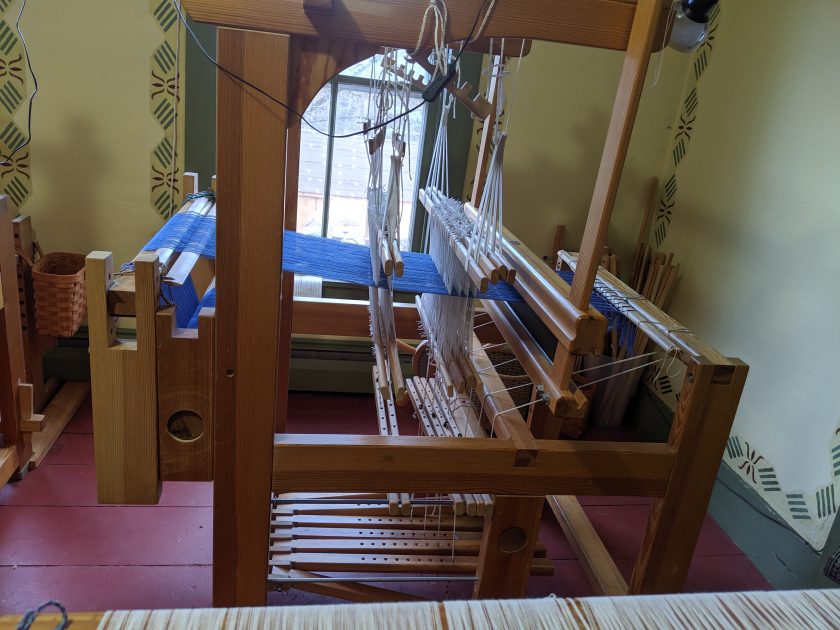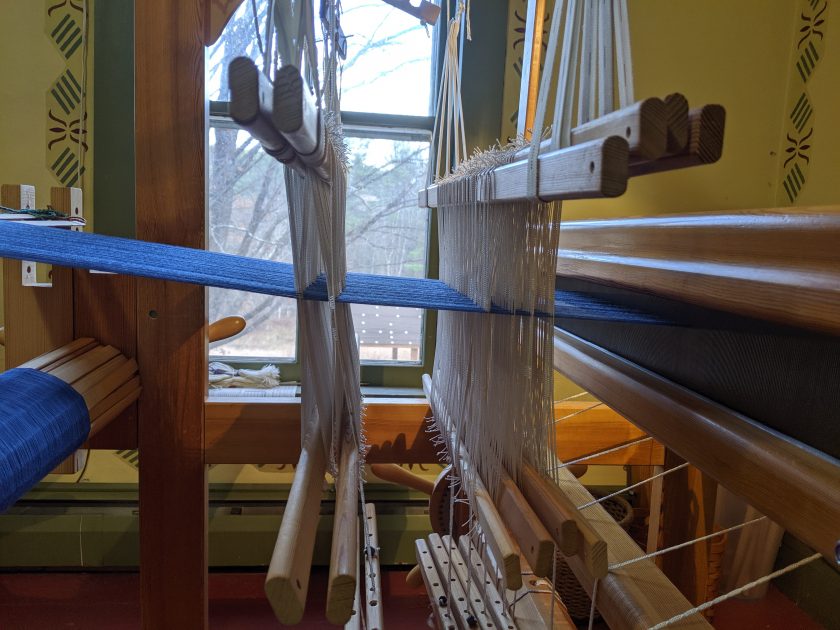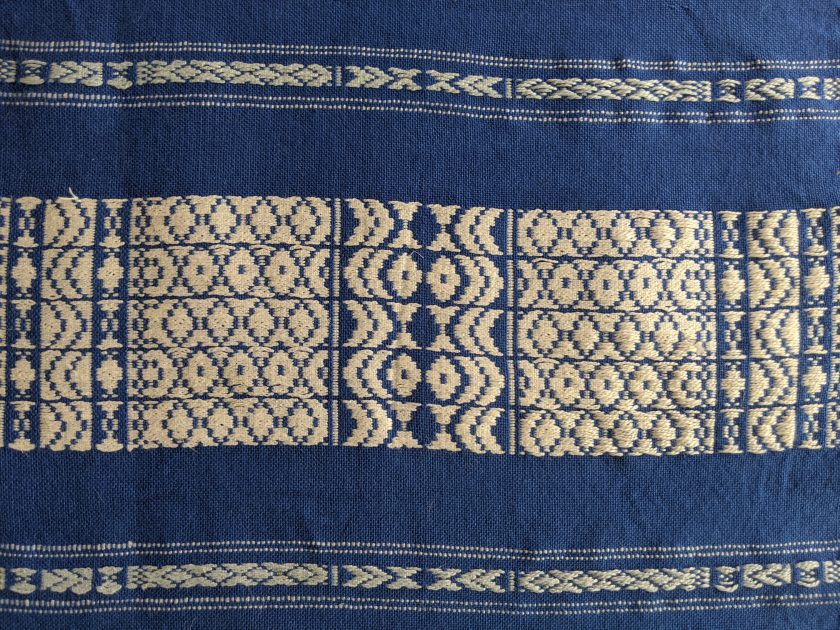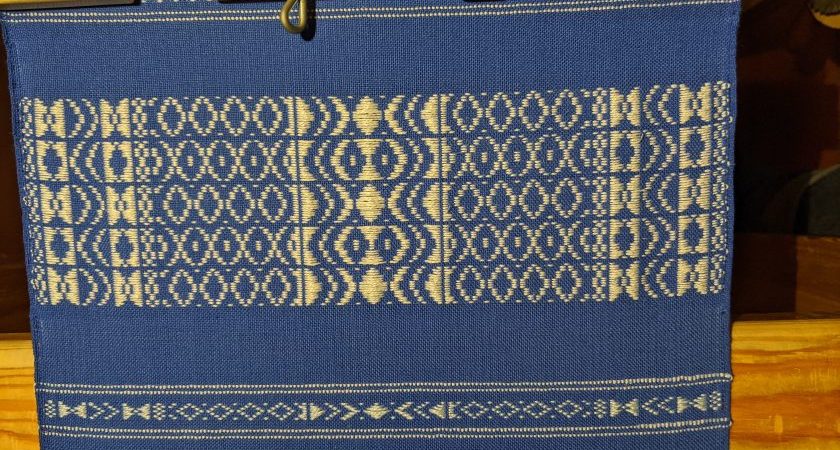This is another interesting project that I did while studying at the Vävstuga Immersion Program. My first post about my experience is here. Smålandsväv (which is called skillbragd in Norway) is particularly interesting because it is done with two harnesses. Sometimes individual shafts are called harnesses, but in this case, the harnesses are two different set of shafts that use different lifting mechanisms.

The back set of shafts are ordinary shafts set-up to weave plain weave. The shed is created using a typical counterbalance mechanism. However, they are set further back on the loom, and the back beam of loom is extended further back to give more space. For the front shafts, each shaft is tied to only one treadle. These shafts are the pattern shafts, and they use long-eye heddles so that the plain weave shed can pass through them. The interesting thing about these shafts is that the threads can be threaded on one, all, or none of the shafts. This allows for some pretty complex patterns with only four pattern shafts. (Although more pattern shafts can be used.) The pattern is created by floats over a plain weave background. This type of weaving is related to the opphamta drawloom weaving that I describe here. It is essentially a simplified version of it with far fewer shafts– although on the drawloom, the pattern shafts are in back while the ground shafts are in front. Smålandsväv is bit tricky to set up, as you have to play around with the height of the shafts to get the sheds to work with the two harnesses.


When weaving, many different pattern variations are possible. In my runner, I tried to show some of the many possible patterns.


Overall, I really enjoyed learning this technique, and I have definitely been eyeing my loom to figure out what I would have to modify to get it to work.


Is it possible to weave Smålandsväv on a simple 8-shaft loom? Tack.
I’m assuming this is a jack loom? Then no, because you need two set of shafts, one with long-eye heddles.